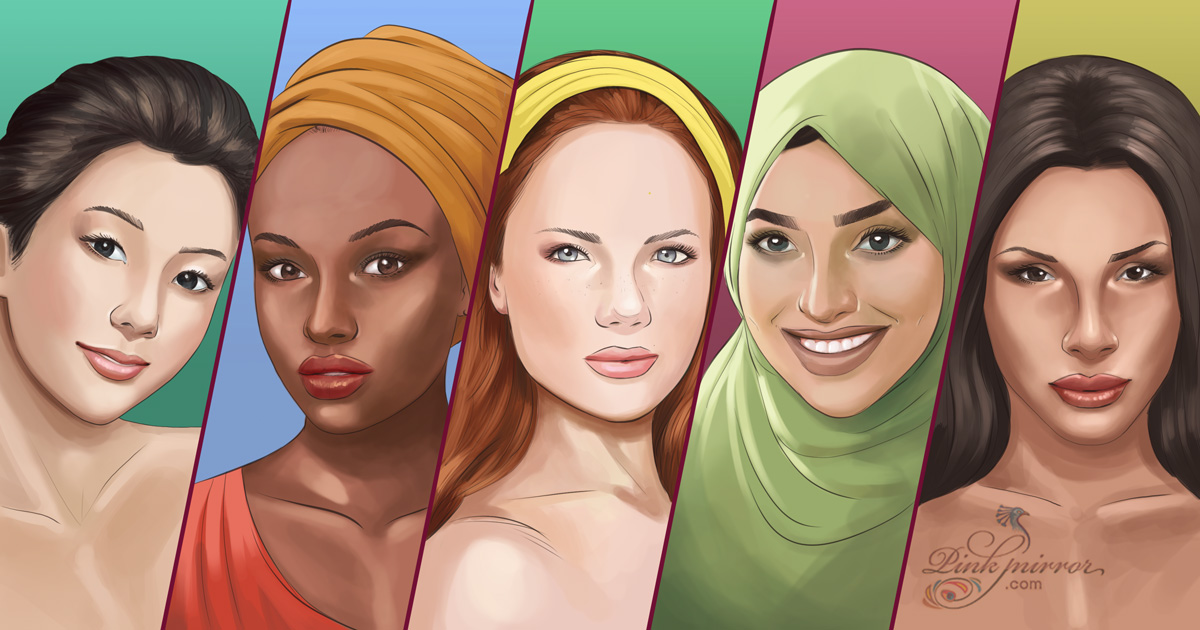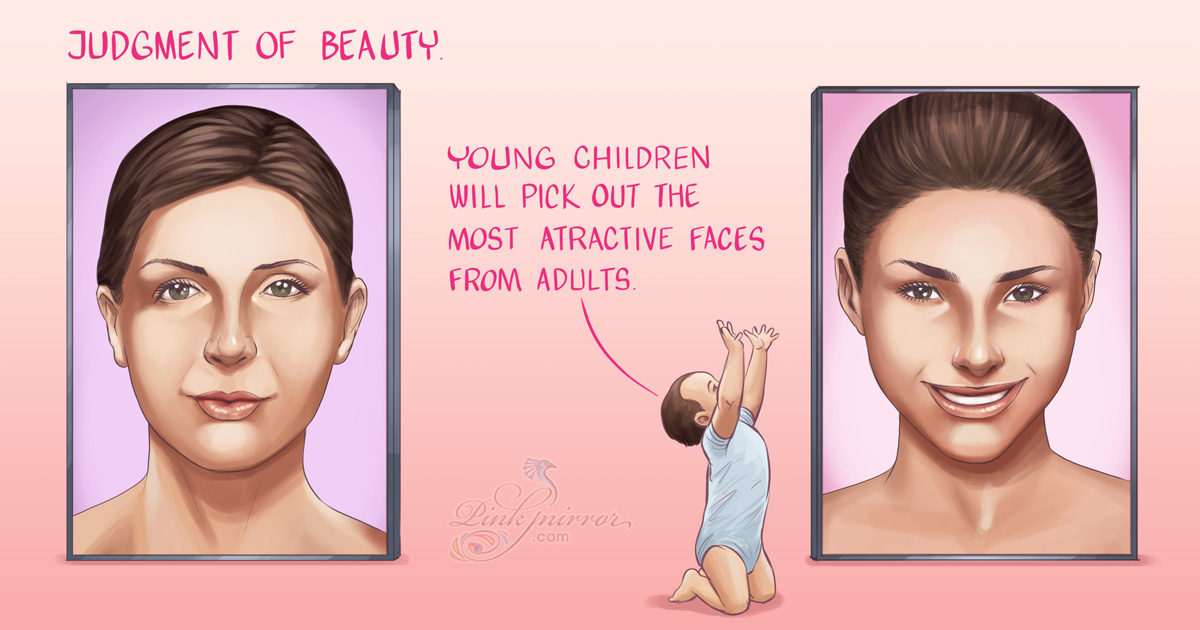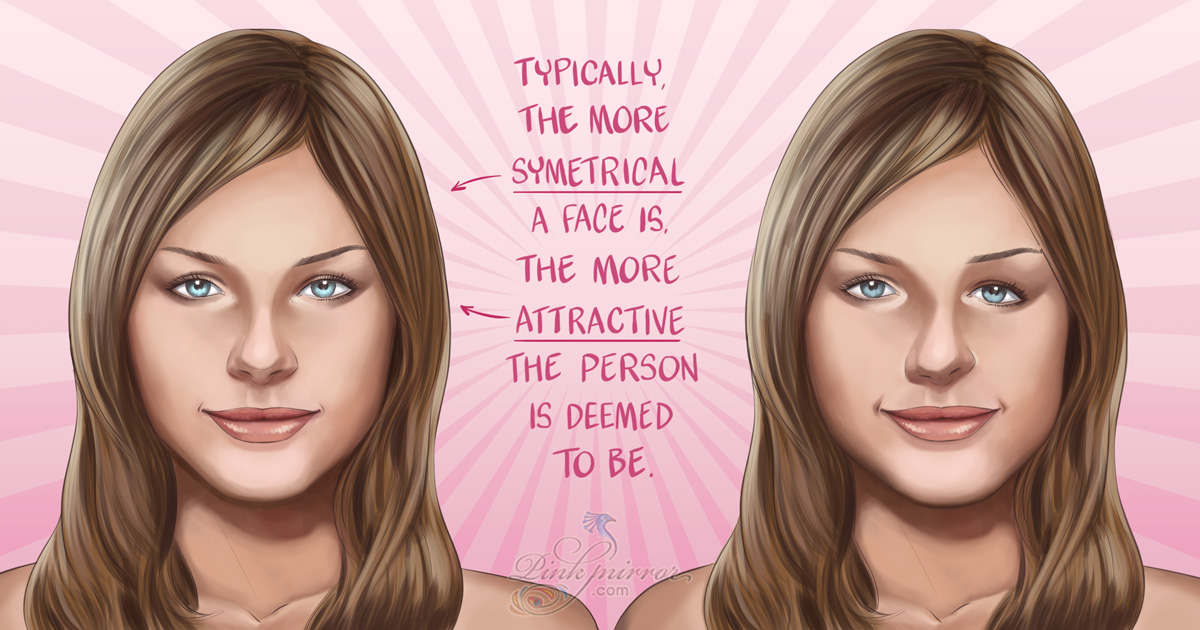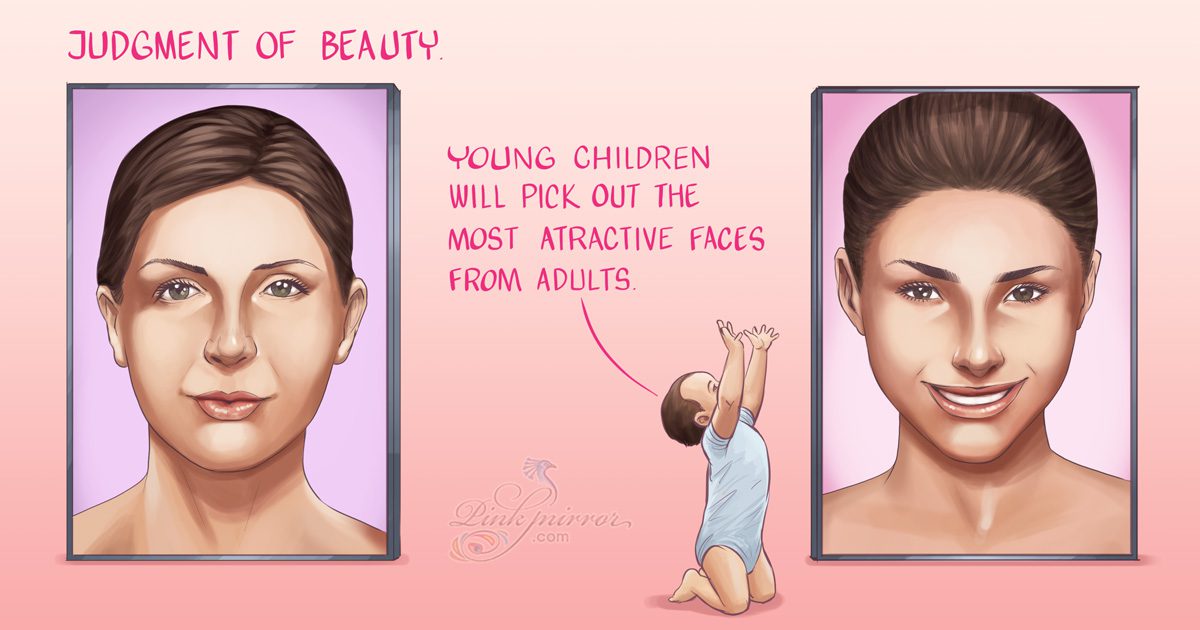Whilst you may find it easy to point out someone you find attractive, it can often be difficult to explain why. Kalology is the study of facial beauty and the way in which our beauty affects our lifestyle and role in society.
For years, researchers and scientists have been trying to pinpoint just what makes someone attractive and whether it is in fact hard-wired ratios as opposed to just physical traits. Experiments have shown that regardless of different cultures, genders and ages, attractive people are deemed beautiful globally.
The human face has been a subject of fascination across many societies for as long as civilization has existed. By looking at someone’s face you can tell a lot about a person – their age, previous environmental exposure, emotions, health, and much more.

As comforting as it is to think that perceptions vary greatly depending on the individual, in recent decades, research has found evidence that there are specific attributes that observers find especially attractive. These attributes are symmetry, sexually dimorphic shape cues, skin colour/texture. The ratio of these attributes present on the face to be perceived as attractive is learned gradually by the individual through exposure to culturally presented ideals.
A Western person will be able to spot the same attractive Asian face as Asians themselves, and vice versa. Young children will pick out the same attractive faces as an adult would.

The power of beauty is undeniable. Beautiful people tend to earn more, have more successful relationships and are generally happier. As a world so obsessed with beauty, being able to define beauty can help us understand our society, our history and our genetics more accurately.
What makes someone beautiful?
With research proving that the perception of beauty isn’t just a different opinion from person to person and there is, in fact, a globally accepted ‘attractive’ trait, scientists have been studying what exactly makes someone beautiful.
Many contributors refer to the evolutionary origins of attractiveness preferences [3,4]. According to this view, facial traits signal mate quality and imply chances for reproductive success and parasite resistance.
In contrast to the theories based on biology, it has been suggested that our preferences are products of our cultural and social experiences [5]. This view has been challenged by two types of evidence. Not only is there cross-cultural agreement on what we consider attractive [6,7], but also our facial preferences emerge earlier than what it is likely for cultural learning to influence our preferences [8,9]. Several experiments have shown that 2–8 months old infants prefer looking at faces rated by adults as more attractive [9].
There is a plethora of studies throughout the past century that explore the connection between social conjecture and physical characteristics, however, they do not always prove to have strong ground.
For example, to study various face shapes, researchers have turned to geometric morphometric methods, which take into consideration biological factors, shape information, and trait inference in the same data space. In 2005, Schaefer and colleagues were the first to make use of this possibility in the analysis of faces [10,11,12].
Certain dimensions and ratios create harmony among facial features, which decide attractiveness.
As we can see, based on multiple studies done by researchers, a few theories can be Highlighted.
Facial Symmetry
One of the main findings as to what measures conventional beauty is facial symmetry. Faces that are deemed attractive are often symmetrical. Facial symmetry is one of the main findings as to what measures conventional beauty. Typically, the more symmetrical a face is, the more attractive the person is deemed to be. There are different theories explaining why symmetrical faces are beautiful.
According to the study of Shackelford and Larsen [13], facial fluctuating asymmetry is not just related to physiological health but also psychological and emotional health. They used different techniques to research the consequences of fluctuating asymmetry on health.
According to the results, people with high facial asymmetry reported physiological complaints such as headaches, gastrointestinal problems, and psychological, for example, depression [13].
There are two main theories as to why symmetrical faces signify beauty, the first being that it reflects good health. Age, disease and infections can cause asymmetry in the face, whereas symmetry suggests a person has better health and better genes to pass onto their offspring. Humans, therefore, prefer a mating partner to have a symmetrical face.

The second theory is that people find it easier and quicker to process symmetrical faces as opposed to asymmetrical faces which can take a few moments to digest. This might explain why symmetrical faces perform better in experiments whereby test subjects have to choose the most beautiful face in a short time limit.
It isn’t just humans who admire facial symmetry, it’s a popular trait amongst the animal kingdom too. It has been proven that female swallows prefer males with symmetrical tail feathers as this displays better genes and good health.
Average Faces
When you think of beauty you often associate it with being unique and unusual, however, research shows that people actually find average faces the most beautiful. In many studies, it is, in fact, the computer-generated images where faces are morphed to create an ‘average’ look, which is picked up as being the most beautiful.
This could be because average faces are easier to process, whereas deviations from a symmetrical face such as a crooked nose or wonky teeth can be seen as disrupting beauty which is why people often opt for surgery to fix imperfections.
In modern society, beauty is often associated with being unique. Research, however, shows that people find average faces the most beautiful.
This theory can be traced all the way back to 1877 when A. L. Austin wrote a letter to Charles Darwin noting that a composite of two faces was surprisingly attractive. In his experiment, he had placed two different portraits in a stereoscope and saw that they blended well into a single portrait. He wrote: “The faces blend in the most remarkable manner,
producing in case of some ladies portraits, in every instance, a decided improvement in beauty” [18,19].
Intrigued by this phenomenon, psychologists have replicated this experiment in more formal studies. During a study executed by Langlois and Roggman, averaged faces were created by blending various images together. People then were tasked with rating the original photos
in comparison to the composites. The results showed that the judges preferred and rated higher the averaged faces, rather than the component ones [20].
This hypothesis can also be corroborated by another study of 17-year-olds where researchers found that facial distinctiveness ratings were associated with poor childhood health in males, and poor current and adolescent health in females. On the other hand, facial averageness was linked to good health [21].
Body Ratios
It isn’t just the face which signifies good genes and beauty but the body too. Men typically prefer a woman with a waist to hip ratio of 0.7. This golden ratio signifies good fertility as when women age and become less fertile their waist becomes less pronounced, so a younger body with a 0.7 ratio suggests a better mating partner. A Body Mass Index of 20.85 is also known as the optimal body size for women and suggests good health.
Women subconsciously tend to prefer men with a waist to hip ratio of 0.9 as this suggests a physically strong and healthy man. Broad shoulders and narrow hips are deemed most beautiful on a man.
Familiarity
Studies suggest that both men and women are more attracted to faces which resemble the faces of the people they grew up around, this typically means the mother and father but can also be other members of the close family.
Faces which have similar traits to your own are also picked out as more attractive which is why you commonly see couples who look similar to each other. There are unusual traits which are often matching such as ear size, neck and wrist circumference and middle finger length.
There are still lots of question as to why familiarity is such a key part in picking a partner but it explains why people choose people of the same beauty level as their own.
Some studies suggest that individuals are more drawn to faces that resemble the faces of the people they grew up around [16]. This generally means the parents but may also be other members of the close family.
For example, you may have noted on more than one occasion that a lot of couples look like one another. Based on the theory of familiarity that is because faces that have similar traits to yours are seen as more attractive. Science and psychology also anticipate that we are attracted to what is familiar to us because we consider it safe [17].
Skin quality
Facial skin has without a doubt been found to have a significant impact on facial attractiveness. It is no coincidence that the beauty and cosmetology industry has been blooming increasingly for centuries. The current studies tell us that texture and appearance of the skin play an important role in the judgment of female facial beauty. According to the authors, this is most likely due to the fact that skin texture also shows fertility and health [22].
The good news for many is that in this day and age, the fields of dermatology and cosmetology have evolved progressively. Therefore, a lot of improvements can be achieved with the help of accurate skincare and makeup.
More Beautiful Traits
Symmetry, averageness, body ratios and familiarity are just some of the researched traits as to what makes someone beautiful. Everything from voice to hair colour can affect the beauty of an individual.
Women tend to subconsciously prefer a wide smile, small eyes, a big nose, a large voice and a deep voice as these all signify high levels of testosterone and a good protector for the family.
Men picked out high cheekbones, big eyes, a thin jaw, a small nose, narrow shoulders and a high, breathy voice as most attractive. In several studies, men also selected features of a woman aged around 24.8 years when women are at one of their most fertile ages.
What are the advantages of beauty?
The study of Kalology is not just about what makes someone beautiful but how this affects society as a whole. By understanding beauty, researchers have been able to look back at our ancestors to discover the traits which have been carried through in evolution to see how our perception of beauty has shaped the human face. For example, paleontologists at the National History Museum have found that men have developed shorter and broader faces which emphasize the brow bone and size of the jaw.
Beauty has a huge effect on society too and there are many advantages to being attractive.
More successful careers
Those with an attractive face are said to be 2-5 times more likely to be hired at a job interview and earn up to 16 percent more. There is also said to be a correlation between taller men and earning higher wages. Although these are shocking figures, it’s understandable when people who are hiring will subconsciously prefer beautiful faces and will choose them over those without conventional beauty. Generally, people like to surround themselves with beautiful people and there are no exceptions when it comes to coworkers.

Judged kinder in life
Research has shown that attractive people are seen as being more honest and helpful, whereas unattractive people are seen as rude and unapproachable. Once again this explains why beautiful people are more likely to have better careers and relationships whereas others are left behind and even bullied at work or school.
More successful relationships
Whilst people tend to choose partners who have similar levels of beauty as themselves, people will always try to go slightly more attractive than themselves. This means that the more conventionally beautiful you are, the more partners you have to choose from and the better genes you can pass onto your offspring. This results in more successful relationships and more choices.
Happier
According to research, people who have beauty are typically happier in life. They are more likely to look after themselves and enhance their own natural beauty with a good diet and healthy lifestyle, and with more successful careers, friendships and relationships, they are generally happier with life. This explains why so many people choose surgery to make themselves more beautiful and eventually, happier.
The science of facial beauty is fascinating as it not only tells us a lot about our own habits but also about our ancestor’s choices. Understanding beauty and levels of attractiveness can help us recognize our own choices both in friendships, careers and relationships.
Notable Mentions
Physiognomy dates back to ancient times and it formed as a part of practical philosophy. Early classical literature examples include Homer and Hippocrates. In the past, faces have been studied for many purposes – astrological, to judge character and personality traits, and
more. In the 1920s, Dr Edward Vincent Jones, a US Superior Court Judge, fascinated by the similarity between people he met in thousands of courtroom encounters, arrived at sixty-four physical traits and he called it “personology”.
Reference list
1 Uniphiz.com. n.d. Face Reading History – Practice Of Physiognomy, Phrenology, Personality, Astrology. [http://www.uniphiz.com/physiognomy_history.htm].
2 Little, A., Jones, B. and DeBruine, L., 2011. Facial attractiveness: evolutionary based research. Philosophical Transactions of the Royal Society B: Biological Sciences, 366(1571), pp.1638-1659. [https://royalsocietypublishing.org/doi/10.1098/rstb.2010.0404]
3 R. Thornhill, S.W. Gangsted. Facial attractiveness. Trends in Cognitive Sciences, 3 (1999), pp. 452-460.
4 A.P. Møller, J.P. Swaddle. Asymmetry, developmental stability, and evolution. Oxford University Press, Oxford (1997). [https://books.google.es/books?id=XSgyfa2Sw9MC&lpg=PA1&ots=dwDo23KeW6&lr&pg=PR10#v=onepage&q&f=false]
5 Etcoff, N. Survival of the Prettiest: The Science of Beauty (Anchor/Doubleday, 1999).
6 Perrett, D. I. et al. Effects of sexual dimorphism on facial attractiveness. Nature 394, 884–887 (1998).
7 Rhodes, G. et al. Attractiveness of facial averageness and symmetry in non-Western cultures: in search of biologically based standards of beauty. Perception 30, 611–625 (2001).
8 Samuels, C. A. & Ewy, R. Aesthetic perception of faces during infancy. Br. J. Dev.Psychol. 3, 221–228 (1985).
9 Langlois, J. H. et al. Infant preferences for attractive faces: rudiments of a stereotype?Dev. Psychol. 23, 63–69 (1987).
10 Schaefer, K. et al. Female appearance: facial and bodily attractiveness as shape.Psychol Sci 48, 187–204 (2006).
11 Fink, B. et al. Second to fourth digit ratio and face shape. Proc R Soc B 272, 1995–2001, doi: 10.1098/rspb.2005.3179 (2005).
12 Schaefer, K., Fink, B., Mitteroecker, P., Neave, N. & Bookstein, F. L. Visualizing facialshape regression upon 2nd to 4th digit ratio and testosterone. Coll Antropol 29, 415–419(2005).
13 Shackelford, T.K.; Larsen, R.J. Facial asymmetry as an indicator of psychological,emotional, and physiological distress. J. Pers. Soc. Psychol. 1997, 72, 456–466.
14 PLOS. “Face shape is in the genes: Genome-wide association study identifies geneticvariants that contribute to healthy facial traits.” ScienceDaily. ScienceDaily, 25 August 2016. [https://www.sciencedaily.com/releases/2016/08/160825151603.htm]
15 Ivonette, K., 2019. What Is My Face Shape. [Blog] Pinkmirror, Available at: <https://pinkmirror.com/blog/what-is-my-face-shape/>
16 K. Grammer, B. Fink, A. Juette, G. Ronzal, R. Thornhill. Female faces and bodies: Ndimensionalfeature space and attractiveness. G. Rhodes, L.A. Zebrowitz (Eds.), Advancesin visual cognition, vol. 1: facial attractiveness, Ablex, Westport, CT (2002) [https://psycnet.apa.org/record/2001-05852-004]
17 Ward, D., 2013. The Familiarity Principle Of Attraction. [online] Psychology Today. Available at: <https://www.psychologytoday.com/us/blog/sense-and-sensitivity/201302/the-familiarity-principle-attraction>
18 Galton, F. (1878). Composite portraits. Journal of the Anthropological Institute of Great Britain & Ireland, 8, 132-144.
19 Valentine,T., Darling S., Donnelly M. Psychonomic Bulletin & Review 2004, 11 (3), 482-487.
20 J.H. Langlois, L.A. Roggman. Attractive faces are only average. Psychological Science, 1 (1990), pp. 115-121. [https://doi.org/10.1111/j.1467-9280.1990.tb00079.x]
21 Rhodes G., Zebrowitz L.A., Clark A., Kalick S.M., Hightower A., McKay R. Do facial averageness and symmetry signal health? Evol Hum Behav. 2001 Jan;22(1):31-46. [https://pubmed.ncbi.nlm.nih.gov/11182573/]
22 Fink, B., Grammer, K., & Thornhill, R. (2001). Human (Homo sapiens) facial attractiveness in relation to skin texture and color. Journal of Comparative Psychology, 115(1), 92–99. [https://doi.apa.org/doiLanding?doi=10.1037%2F0735-7036.115.1.92]

2 replies on “Kalology – The science of facial beauty”
I’m so ugly 🙁
Where the study centre of kalology